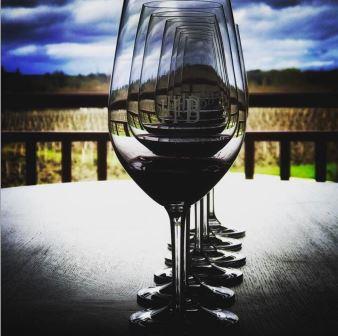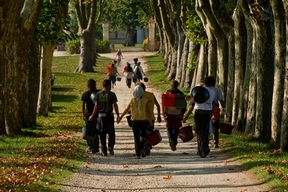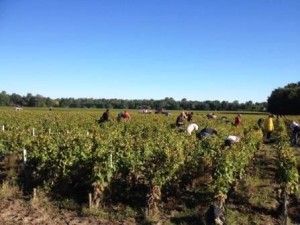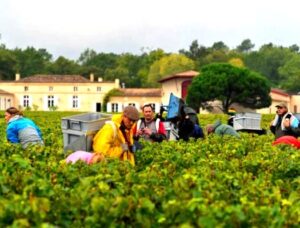
A detailed Bordeaux vintage guide and summary covering the years 1900 to today with detailed information on the different Bordeaux vintage conditions, growing seasons, harvest reports, temperatures and picking dates. Links are offered for buying tips that focus on wines that offer the best quality and price value ratio from every important year in the Bordeaux vintage Guide.
If you want to read about Bordeaux wine producers in different Bordeaux appellations: Links to all Bordeaux Wine Producer Profiles If you are interested in learning more about Bordeaux wine, we offer numerous articles on everything about Bordeaux wine, from a history of the Bordeaux region and the famous 1855 Classification of the Medoc, to the grapes used to produce Bordeaux wine and even, detailed vintage summaries covering Bordeaux wine from 1900 to today: All About Bordeaux Wine Guide
The links on the left side of the page provide you with detailed articles on all the best Bordeaux vintages from the legendary year of 1945, all the way up to today’s current Bordeaux vintage. Just click on the link that interests you in The Bordeaux Vintage Guide. The Bordeaux Vintage Charts 1959 through Today ranks each vintage and provides you with current information on how the vintages are drinking today, and if the wines are ready to drink, need more time in the cellar, or if they are past their optimum maturity date.
If every picture tells a story, every harvest relates a story as well in this Bordeaux Vintage Guide. Things are different in Bordeaux today.
When you look at the advances in modern Bordeaux wine making and vineyard management techniques, coupled with the willingness to perform the necessary amount of selection in the vineyards and cellars needed to produce the best wine possible, it appears that bad Bordeaux vintages are now a thing of the past. If you don’t agree, look at recent difficult years like 2013, 2011 and 2007 as recent examples.
Think of it like this, a wet, cool year like 2007 would have been a disaster 20 years ago. Today, while dilute, some nice, early drinking wines were produced. For different reasons, 2011 Bordeaux and 2012 Bordeaux would have produced extremely weak wines for previous generations. You can learn more about specific years in the Bordeaux Vintage Guide.
The style of Bordeaux wine varies from year to year. This is due to the different vintage characteristics shaped by the weather, choices made by the winemaker and the soils and terroir of Bordeaux These variances are what gives that uniqueness to Bordeaux wine. Of course not all vintages are created equally. The best vintages all share commonalities.
The best Bordeaux vintages need the following climatic conditions.
Great Bordeaux vintages begin with a warm, dry spring that allows for fast and even flowering. This results in the majority of grapes reaching phenolic maturity at the same time. Stress to the vines caused by a water deficit during the mid summer, from the time the berries begin changing color, until they reach maturity is paramount. The stress helps concentrate flavor and reduce yields.
Warm to hot days and cold nights, with dry conditions during the summer is the perfect weather patter for helping the grapes reach maximum levels of maturity, while retaining acidity for freshness. Rain close to the end of the summer to re-hydrate the vines, stimulating growth and photosynthesis. Finally, warm, sunny, dry daytime conditions with cool nights during the harvest period add to the greatness of a vintage.
Dry vintages, those in which the vines experience water deficit stress have all been among the best vintages in Bordeaux. As you know, different types of soils and terroir handle each vintage in their own way. This is important to know, as this that can help you find the best wines in every vintage.
There are basically Four different types of Bordeaux vintages which can be subdivided into two categories. You have the early drinking and classic vintages on one end of the spectrum. On the other side of the vineyard, you have the highly sought after, special vintages.
With the highly sought after collectible years, you have Bordeaux wine at its best. These years can be split into two different styles. You have vintages that are supple, sexy, opulent and ripe. The wines are rich and concentrated. The tannins are silky smooth and many of the wines can be enjoyed in their youth and as they age. Those qualities are found in for example: 2009, 2003, 2001, 1990, 1989, 1985, 1982, 1964, 1959, 1953, 1950, 1947, 1929 and 1928.
But there is a completely different style of Bordeaux wine that is also highly collectible. Those years produce stunning wines with intensity, concentration, tannin and structure for serious aging. Many of those wines are not fun to drink early, especially the Cabernet Sauvignon bases wines from the Left Bank.
Examples of those vintages are 2016, 2015, 2014, 2012, 2010, 2006, 2005, 2000, 1996, 1995, 1986, 1975, 1970, 1966, 1961, 1945 and 1928. The top wines from those years could take decades to develop and mature.
As you have read, there are years when Cabernet was King in Bordeaux, but there are also vintages when the Merlot based wines of the Right Bank were favored: 2015, 2012, 1998, 2001, 1995, 1994 are the most recent years that come to mind.
The other category of Bordeaux vintages you often encounter can be quite useful, as the wines are able to be enjoyed in their youth, while you wait for the bigger vintages to develop and mature. There are the soft, light, early drinking vintages like 2014, 2012, 2011, 2007, 1999, 1997, 1987, 1981 and 1979 for example.
Another example of a small vintage are the cooler years that produce classic, Bordeaux styled wines that require age. They can be a bit stern in the left bank during their youth, and you also find wines lower in alcohol, yet they can often pleasure before they are 100 years of age. For example, 2014, 2012, 2004, 2002, 1994, 1988, 1983 and 1978.
There are also the very difficult vintages that have taken place from time to time, which might offer simple pleasure in their youth, But as the wines age, the fruit fades, and they are not much fun to drink. With the level of sorting that takes place at the top estates today, horrid vintages are a thing of the past.
But there are extremely difficult years in Bordeaux, for example; 2013, 2011, 1993, 1992, 1991, 1987, 1984, 1977, 1973, 1972, 1969, 1968, 1967, 1965 and 1963 that need to be approached with extreme caution. As of 2017, 2013 and 2011 for red wine are fine for early drinking. But I would not cellar either vintage looking for a miracle in the bottle to take place.
It is also important to keep in mind that the vintages for the red wines of Bordeaux are not always the same for dry, white Bordeaux wine and Sauternes. Some of the more difficult years with red Bordeaux have been outstanding for white Bordeaux wine and Sauternes, for example: 2013, 2011 and 2007, which are all sublime for sweet and dry white Bordeaux wine.
The unique characteristics discovered in different Bordeaux vintages is a part of what makes wines collecting interesting and fun. That is a good reason to use our Bordeaux Vintage Guide. Comparing wines from the same producer in different years allows you understand the chateau. Comparing wines from a wide array of producers from the same year, lets consumers to discover what took place during specific vintages.
Knowledge and technology have made it possible to produce better Bordeaux than ever before. But no amount of human intervention can alter the unique personality awarded by nature to each Bordeaux vintage. To read details on every Bordeaux vintage from 1945 to today, click any of the links you see on this page.



